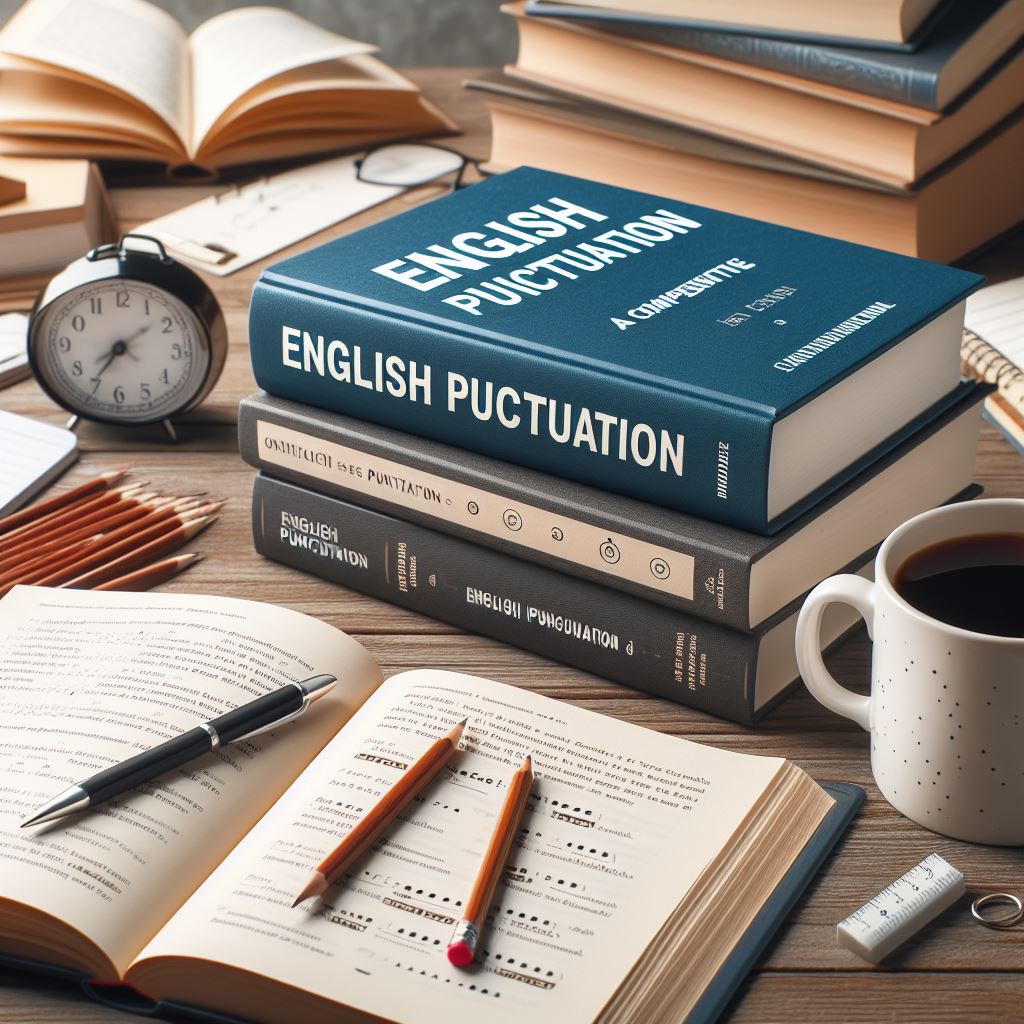A Beginner’s Guide to English Punctuation: Everything You Need to Know
Effective punctuation is the backbone of clear and impactful writing. Mastering English punctuation rules enhances your communication skills and ensures that your message is conveyed with precision. Here’s a comprehensive guide to help you navigate the seas of English punctuation.

1. Period ( . )
- Function: Indicates the end of a sentence.
- Usage: Use at the end of a declarative or imperative sentence.
Example: She walked to the park.
2. Comma ( , )
- Function: Separates items in a list, introduces clauses, and indicates a pause in a sentence.
- Usage:
- List: I need eggs, milk, and bread.
- Clauses: John, who is my neighbor, is a doctor.
- Pause: The sun was setting, casting a warm glow.
3. Semicolon ( ; )
- Function: Connects closely related independent clauses.
- Usage: Use to join two independent clauses without a conjunction.
Example: The storm was intense; we decided to stay indoors.
4. Colon ( : )
- Function: Introduces a list, explanation, or quotation.
- Usage:
- List: We need three things: courage, strength, and wisdom.
- Explanation: The reason is simple: they never received the invitation.
5. Exclamation Mark ( ! )
- Function: Indicates strong emotion, surprise, or emphasis.
- Usage: Use sparingly for impactful statements or exclamatory sentences.
Example: What a beautiful sunrise!
6. Question Mark ( ? )
- Function: Indicates a direct question.
- Usage: Use at the end of interrogative sentences.
Example: Have you finished your homework?
7. Quotation Marks ( ” ” )
- Function: Encloses direct speech or a quotation.
- Usage: Place at the beginning and end of the quoted text.
Example: She said, “I’ll be there by noon.”
8. Apostrophe ( ‘ )
- Function: Indicates possession or contraction.
- Usage:
- Possession: The cat’s tail was fluffy.
- Contraction: It’s a beautiful day.
9. Hyphen ( – )
- Function: Connects words in compound nouns or adjectives.
- Usage:
- Compound Noun: high-school student
- Compound Adjective: well-known artist
10. Parentheses ( ( ) )
- Function: Encloses additional information or clarifications.
- Usage: Insert parenthetical information within the main sentence.
Example: The sun (when visible) provides warmth.
11. Ellipsis ( … )
- Function: Indicates omitted words or a trailing off of thought.
- Usage: Use to show a pause or incomplete statement.
Example: The mystery remained unsolved…
12. Brackets ( [ ] )
- Function: Encloses additional information or corrections within a quotation.
- Usage: Often used in academic writing or when clarifying a quoted statement.
Example: He said, “[The suspect] left the scene hurriedly.”
13. Dash ( — )
- Function: Indicates a break in thought, sets off information, or adds emphasis.
- Usage: Can be used in pairs or alone for emphasis.
Example: The solution — though unconventional — proved effective.
Conclusion: Punctuate with Precision
Mastering English punctuation rules is essential for effective written communication. By understanding and applying these rules, you’ll punctuate your sentences with precision, ensuring clarity and impact in your writing.


